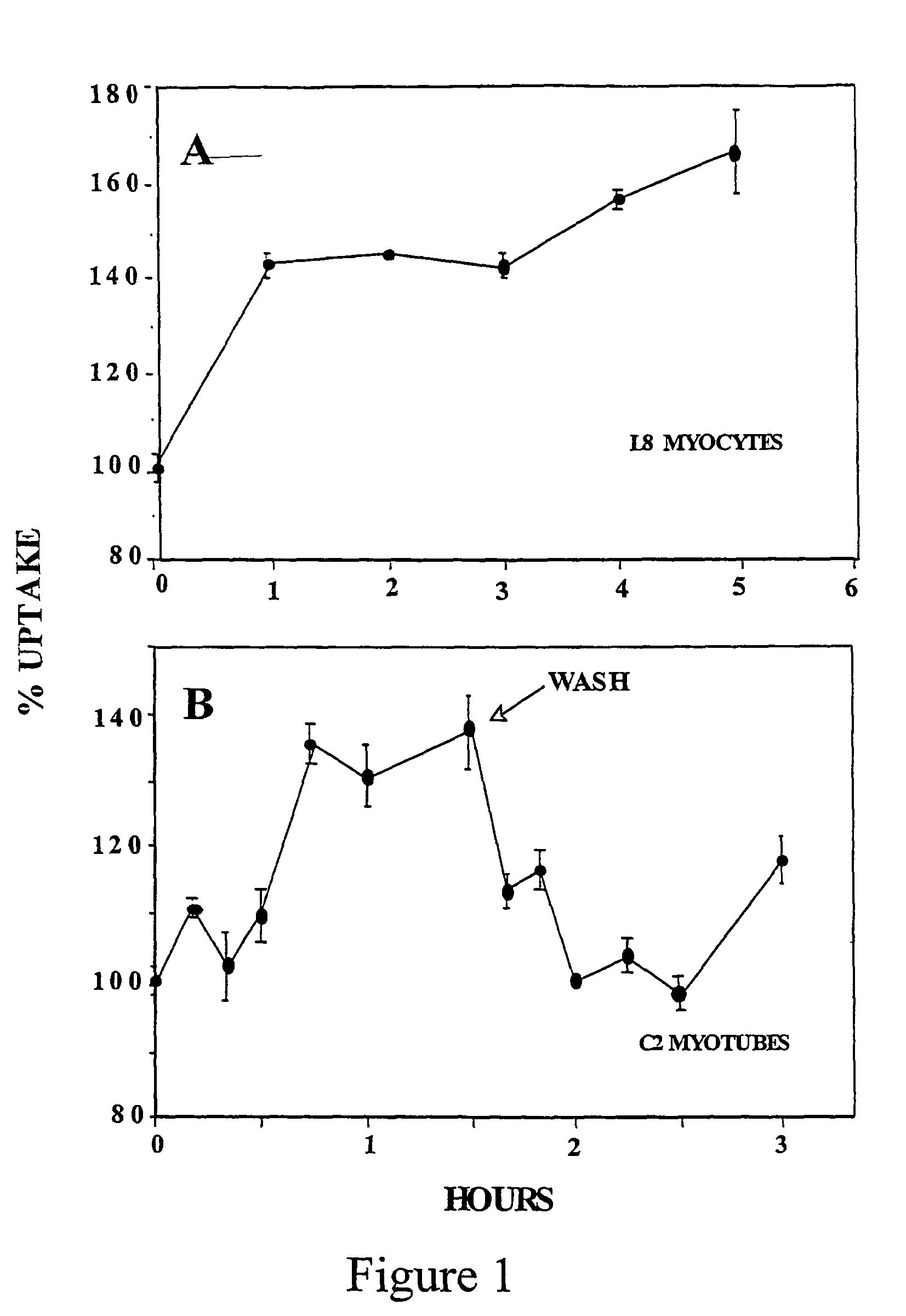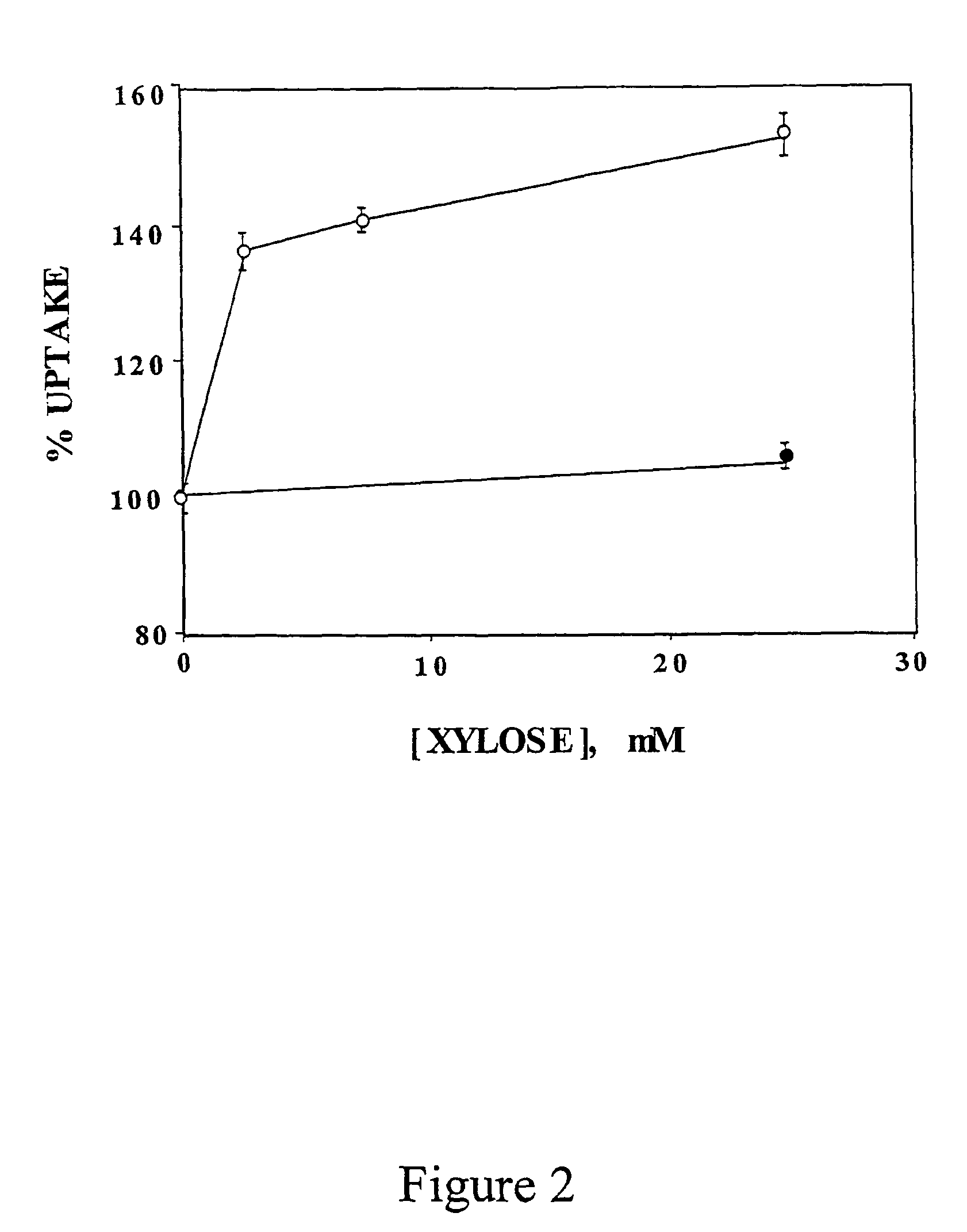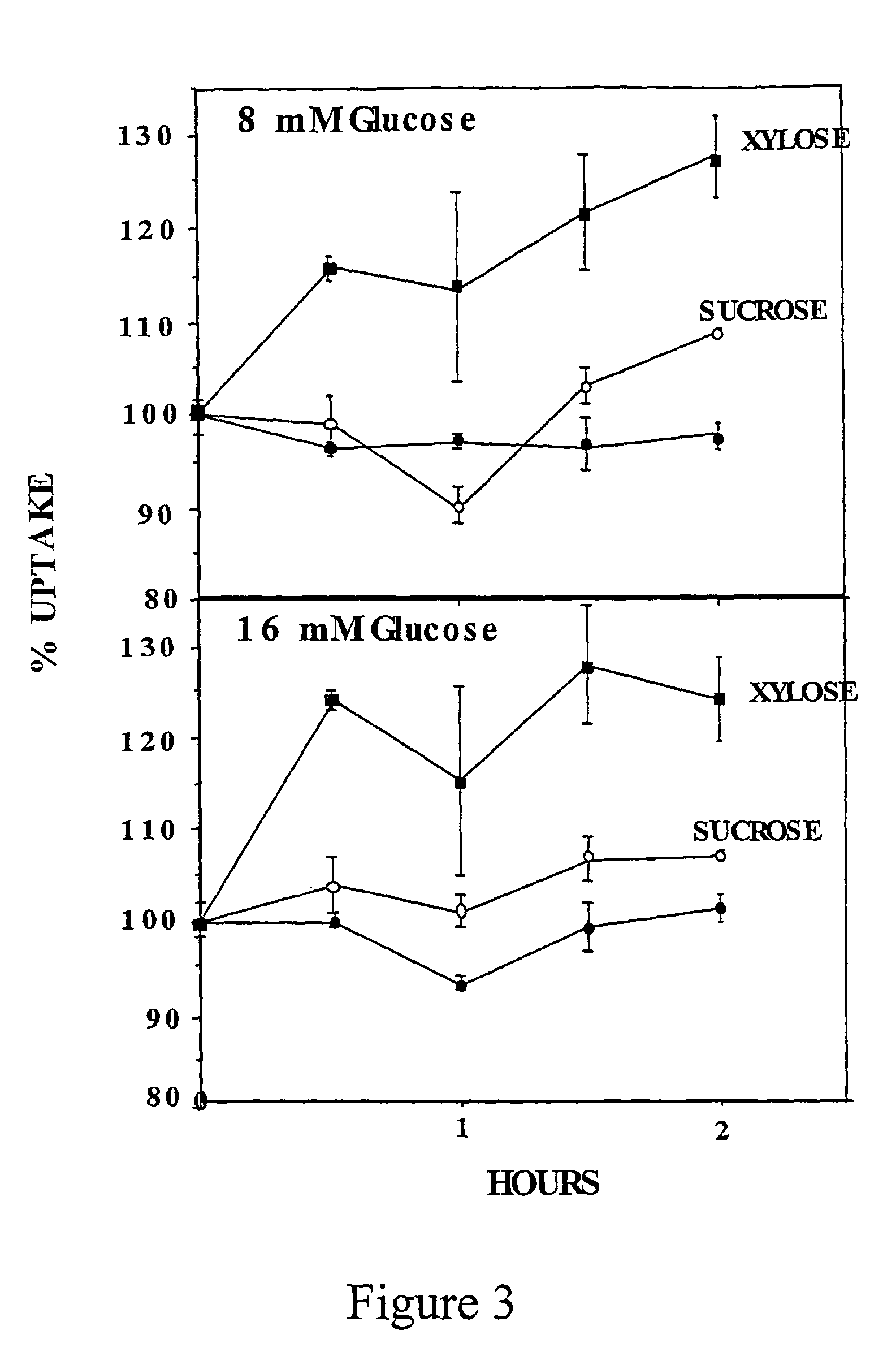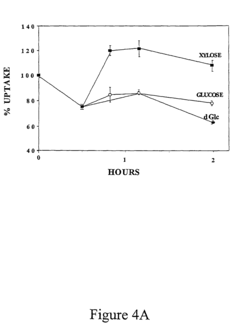Recent Advances in Pentose Phosphate Pathway Nutritional Studies
Pentose Phosphate Pathway: Research Background
The pentose phosphate pathway (PPP) is a fundamental metabolic pathway that plays a crucial role in cellular metabolism and energy production. It has been a subject of intense research in the field of nutritional studies for several decades. The PPP is primarily responsible for generating NADPH, which is essential for biosynthetic reactions and maintaining cellular redox balance, as well as producing ribose-5-phosphate, a precursor for nucleotide synthesis.
Recent advances in pentose phosphate pathway nutritional studies have shed light on its significance in various physiological processes and disease states. Researchers have discovered that the PPP is intricately linked to glucose metabolism, lipid synthesis, and oxidative stress management. These findings have opened up new avenues for understanding the role of nutrition in modulating the PPP and its impact on overall health.
One of the key areas of focus in recent PPP research has been its involvement in cancer metabolism. Studies have shown that many cancer cells exhibit an upregulation of the PPP, which provides them with the necessary building blocks for rapid proliferation and protection against oxidative stress. This understanding has led to the exploration of PPP inhibitors as potential therapeutic targets in cancer treatment.
Furthermore, the PPP has been implicated in the pathogenesis of metabolic disorders such as diabetes and obesity. Researchers have found that alterations in PPP activity can contribute to insulin resistance and lipid accumulation. These discoveries have prompted investigations into dietary interventions and nutritional strategies that can modulate PPP activity to improve metabolic health.
In the context of aging and neurodegenerative diseases, recent studies have highlighted the importance of the PPP in maintaining neuronal health and cognitive function. The pathway's role in generating NADPH and protecting against oxidative stress has been linked to neuroprotection and the prevention of age-related cognitive decline. This has led to increased interest in nutritional approaches that can enhance PPP activity in the brain.
Additionally, advancements in analytical techniques and metabolomics have enabled researchers to gain deeper insights into the flux and regulation of the PPP under various nutritional conditions. These technological developments have facilitated more comprehensive studies of the pathway's response to different dietary interventions and its interactions with other metabolic pathways.
The growing body of knowledge surrounding the PPP has also sparked interest in its potential applications in personalized nutrition. Researchers are exploring how individual variations in PPP activity may influence nutrient requirements and responses to dietary interventions. This line of investigation holds promise for developing tailored nutritional strategies based on an individual's metabolic profile.
Pentose Phosphate Pathway Nutritional Studies: Market Trends
The global nutritional market has been experiencing significant growth and transformation in recent years, driven by increasing consumer awareness of health and wellness, as well as advancements in scientific research. The pentose phosphate pathway (PPP) has emerged as a key area of interest in nutritional studies, with its potential implications for various aspects of human health and metabolism.
One of the most prominent trends in the nutritional market is the growing demand for functional foods and nutraceuticals that target specific health concerns. As research on the pentose phosphate pathway continues to uncover its role in cellular processes, including antioxidant defense and biosynthesis of nucleotides and amino acids, there is a rising interest in developing products that can modulate or support this pathway.
The sports nutrition segment has shown particular interest in PPP-related research, as the pathway's involvement in energy metabolism and oxidative stress management aligns well with the needs of athletes and fitness enthusiasts. This has led to the development of specialized supplements and fortified foods designed to optimize PPP function and enhance athletic performance.
Another significant trend is the increasing focus on personalized nutrition. As understanding of the PPP's genetic variations and individual metabolic differences grows, there is a move towards tailored nutritional solutions. This trend is driving the development of diagnostic tools and personalized supplement regimens based on an individual's PPP profile.
The aging population in many developed countries has also influenced the nutritional market, with a growing emphasis on products that support healthy aging. Recent advances in PPP nutritional studies have highlighted the pathway's potential role in age-related conditions, leading to increased interest in PPP-targeted interventions for older adults.
In the realm of weight management and metabolic health, the PPP's involvement in lipid metabolism and glucose homeostasis has sparked interest in developing nutritional strategies that leverage this pathway. This has resulted in a surge of products claiming to support metabolic health through PPP modulation.
The natural and clean label trend continues to dominate the nutritional market, with consumers seeking products made from whole food sources. This has led to increased research into plant-based compounds that can naturally influence the PPP, driving innovation in botanical extracts and phytonutrient formulations.
Lastly, the integration of PPP research into the broader field of nutrigenomics is shaping the future of the nutritional market. As the interplay between nutrition, genetics, and the PPP becomes clearer, there is a growing market for genetic testing services coupled with nutritional recommendations based on PPP-related genetic markers.
Technical Challenges of Pentose Phosphate Pathway Nutritional Studies
The pentose phosphate pathway (PPP) plays a crucial role in cellular metabolism, particularly in generating NADPH and ribose-5-phosphate. However, recent advances in PPP nutritional studies have revealed several technical challenges that researchers must overcome to fully understand and harness the potential of this pathway.
One of the primary challenges is the complexity of PPP regulation. The pathway is intricately connected to other metabolic processes, making it difficult to isolate and study its specific effects on nutrition. Researchers struggle to develop models that accurately represent the dynamic nature of PPP regulation in response to various nutritional stimuli. This complexity hinders the development of targeted interventions to modulate PPP activity for nutritional benefits.
Another significant challenge is the lack of sensitive and specific biomarkers for PPP activity. Current methods for assessing PPP flux often rely on indirect measurements or invasive techniques, limiting their applicability in human nutritional studies. The development of non-invasive, real-time biomarkers for PPP activity would greatly enhance our ability to monitor the pathway's response to different nutritional interventions and understand its role in various health conditions.
The tissue-specific nature of PPP activity presents an additional hurdle. Different tissues exhibit varying levels of PPP activity, and the pathway's importance in nutrient metabolism can differ significantly between organs. This heterogeneity complicates the interpretation of systemic PPP measurements and necessitates the development of tissue-specific analytical techniques to fully elucidate the pathway's nutritional impact.
Furthermore, the interplay between PPP and other metabolic pathways, such as glycolysis and the citric acid cycle, creates challenges in isolating the specific nutritional effects of PPP modulation. Researchers must develop sophisticated experimental designs and analytical methods to disentangle the complex web of metabolic interactions and identify the unique contributions of PPP to nutritional outcomes.
The translation of PPP research findings from animal models to humans remains a significant technical challenge. While animal studies have provided valuable insights into PPP regulation and its nutritional implications, the extrapolation of these results to human physiology is not always straightforward. Differences in metabolic regulation and dietary patterns between species necessitate careful validation of animal findings in human studies, which can be both time-consuming and resource-intensive.
Lastly, the development of targeted nutritional interventions to modulate PPP activity faces technical hurdles. While the pathway's importance in cellular metabolism is well-established, designing specific dietary compounds or supplements that can selectively influence PPP flux without disrupting other metabolic processes remains a significant challenge. This limitation hampers the translation of PPP research into practical nutritional strategies for health promotion and disease prevention.
Current Pentose Phosphate Pathway Study Methods
01 Genetic engineering of the pentose phosphate pathway
Genetic modifications are made to enhance or alter the pentose phosphate pathway in microorganisms. This can involve introducing new genes, modifying existing ones, or altering regulatory elements to improve flux through the pathway. Such modifications can lead to increased production of desired metabolites or improved utilization of pentose sugars.- Genetic engineering of the pentose phosphate pathway: Genetic modification techniques are used to enhance or alter the pentose phosphate pathway in microorganisms. This involves manipulating genes related to key enzymes in the pathway to improve metabolic efficiency, increase production of desired compounds, or enable utilization of alternative carbon sources.
- Pentose phosphate pathway in biofuel production: The pentose phosphate pathway plays a crucial role in the production of biofuels. Researchers are focusing on optimizing this pathway to improve the efficiency of converting pentose sugars into ethanol or other biofuels, particularly in microorganisms engineered for industrial-scale production.
- Regulation and control of the pentose phosphate pathway: Studies on the regulation and control mechanisms of the pentose phosphate pathway are essential for understanding cellular metabolism. This includes investigating factors that influence flux through the pathway, such as enzyme activity, substrate availability, and cellular redox state.
- Pentose phosphate pathway in cancer metabolism: Research is focused on the role of the pentose phosphate pathway in cancer cell metabolism. Understanding how cancer cells utilize this pathway for growth and survival can lead to the development of new therapeutic strategies targeting metabolic vulnerabilities in cancer.
- Analytical methods for studying the pentose phosphate pathway: Development of advanced analytical techniques to study the pentose phosphate pathway, including metabolomics, flux analysis, and enzyme assays. These methods allow for detailed investigation of pathway dynamics, metabolite levels, and enzyme activities in various biological systems.
02 Metabolic engineering for improved pentose utilization
Strategies are developed to enhance the ability of microorganisms to utilize pentose sugars, particularly in the context of biofuel production. This can involve optimizing enzymes in the pentose phosphate pathway, introducing heterologous pathways, or modifying sugar transport systems to improve pentose uptake and metabolism.Expand Specific Solutions03 Regulation and control of the pentose phosphate pathway
Research focuses on understanding and manipulating the regulatory mechanisms of the pentose phosphate pathway. This includes studying transcriptional and post-translational regulation, metabolic flux analysis, and developing methods to control pathway activity for desired outcomes in biotechnology applications.Expand Specific Solutions04 Applications in metabolite production
The pentose phosphate pathway is exploited for the production of various valuable metabolites. This can include the synthesis of aromatic compounds, nucleotides, amino acids, or other industrially relevant molecules. Efforts are made to redirect carbon flux through the pathway to maximize the yield of target products.Expand Specific Solutions05 Integration with other metabolic pathways
Research explores the integration of the pentose phosphate pathway with other metabolic pathways to create novel or improved biosynthetic routes. This can involve combining elements of glycolysis, the TCA cycle, or other pathways with the pentose phosphate pathway to achieve desired metabolic outcomes or product formations.Expand Specific Solutions
Key Research Groups of Pentose Phosphate Pathway Nutritional Studies
The field of pentose phosphate pathway nutritional studies is in a growth phase, with increasing market size and technological advancements. The competitive landscape is diverse, featuring both established players and emerging companies. Key players like Pioneer Hi-Bred International, Danisco US, and Monsanto Technology LLC are driving innovation in agricultural applications, while companies such as Ardelyx and Bayer Pharma AG focus on pharmaceutical developments. Academic institutions like Zhejiang University and Albert Einstein College of Medicine contribute significantly to research. The technology's maturity varies across sectors, with some areas reaching commercial application while others remain in early research stages. This dynamic environment suggests potential for further breakthroughs and market expansion in the coming years.
DuPont de Nemours, Inc.
Bayer Pharma AG
Breakthrough Findings of Pentose Phosphate Pathway Nutritional Studies
- Development of novel pentose derivatives, such as D-xylose derivatives, that increase glucose transport in a non-insulin dependent manner, enhancing cellular glucose uptake and metabolism, thereby addressing hyperglycemia and its complications.
- Development of pentose derivatives, such as D-xylose derivatives, that increase glucose transport in a non-insulin dependent manner, represented by structures like formulas I-III, which are administered to enhance glucose uptake and metabolism, thereby reducing blood sugar levels and the dosage of anti-diabetic medication.
Recent Advance: Metabolomics Integration
Recent advances in pentose phosphate pathway (PPP) nutritional studies have significantly benefited from the integration of metabolomics approaches. This powerful analytical tool has enabled researchers to gain deeper insights into the complex metabolic networks associated with the PPP and its role in nutrition.
Metabolomics integration has allowed for comprehensive profiling of metabolites involved in the PPP, providing a more holistic view of the pathway's dynamics under various nutritional conditions. By employing high-throughput techniques such as mass spectrometry and nuclear magnetic resonance spectroscopy, researchers can now simultaneously measure a wide range of metabolites, including key PPP intermediates and end-products.
One of the major advantages of metabolomics integration in PPP studies is the ability to detect subtle changes in metabolite levels that may not be apparent through traditional biochemical assays. This sensitivity has led to the identification of novel biomarkers associated with PPP activity, which can be used to assess nutritional status and metabolic health.
Furthermore, metabolomics has facilitated the exploration of cross-talk between the PPP and other metabolic pathways. By analyzing the global metabolic profile, researchers have uncovered previously unknown connections between the PPP and pathways involved in energy metabolism, antioxidant defense, and cellular signaling.
The integration of metabolomics has also enhanced our understanding of how dietary interventions impact PPP activity. Studies have revealed specific metabolite signatures associated with different nutritional states, providing valuable insights into the metabolic adaptations that occur in response to various diets or nutrient deficiencies.
Moreover, metabolomics approaches have been instrumental in elucidating the role of the PPP in disease states related to nutrition. By comparing metabolic profiles between healthy individuals and those with metabolic disorders, researchers have identified PPP-related metabolic perturbations that may contribute to the development or progression of these conditions.
The application of metabolomics in PPP nutritional studies has also paved the way for personalized nutrition strategies. By analyzing individual metabolic profiles, it is now possible to tailor dietary recommendations based on a person's unique PPP activity and overall metabolic state.
In conclusion, the integration of metabolomics has revolutionized PPP nutritional studies, offering unprecedented insights into the pathway's function and regulation. This approach continues to drive advancements in our understanding of nutrition and metabolism, with far-reaching implications for human health and disease prevention.
Recent Advance: Therapeutic Potential of Pentose Phosphate Pathway
Recent advances in pentose phosphate pathway (PPP) nutritional studies have unveiled significant therapeutic potential for various health conditions. The PPP plays a crucial role in cellular metabolism, and its modulation offers promising avenues for therapeutic interventions.
One of the key areas where PPP manipulation shows promise is in cancer treatment. Research has demonstrated that many cancer cells rely heavily on the PPP for their proliferation and survival. By targeting specific enzymes within the pathway, such as glucose-6-phosphate dehydrogenase (G6PD), it may be possible to selectively inhibit cancer cell growth while sparing normal cells. This approach has shown encouraging results in preclinical studies and is now being explored in clinical trials.
In the realm of neurodegenerative diseases, PPP modulation has emerged as a potential strategy to combat oxidative stress and maintain neuronal health. Studies have shown that enhancing PPP activity can increase the production of NADPH, a critical molecule for cellular antioxidant defenses. This approach may help protect neurons from oxidative damage associated with conditions like Alzheimer's and Parkinson's disease.
The PPP also holds promise in the management of metabolic disorders. Recent research has highlighted the pathway's role in regulating glucose homeostasis and lipid metabolism. By enhancing PPP activity, it may be possible to improve insulin sensitivity and reduce the risk of type 2 diabetes. Additionally, PPP modulation could potentially aid in the treatment of non-alcoholic fatty liver disease by promoting lipid oxidation and reducing fat accumulation in the liver.
Cardiovascular health is another area where PPP-based therapies show potential. Studies have demonstrated that PPP activation can protect cardiac cells from ischemia-reperfusion injury, a common complication following heart attacks. Furthermore, PPP modulation may help reduce atherosclerosis by improving endothelial function and reducing inflammation in blood vessels.
In the field of immunology, recent research has revealed the importance of the PPP in regulating immune cell function. Modulating the pathway could potentially enhance the body's immune response to infections or improve the efficacy of immunotherapies in cancer treatment. This approach is particularly promising for developing novel strategies to combat autoimmune disorders and enhance vaccine effectiveness.
As our understanding of the PPP's role in various physiological processes continues to grow, so does its therapeutic potential. The pathway's involvement in diverse cellular functions makes it an attractive target for developing innovative treatments across a wide range of medical conditions. However, further research is needed to fully elucidate the mechanisms underlying these potential therapies and to translate these findings into safe and effective clinical interventions.



